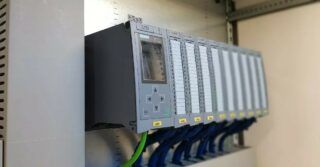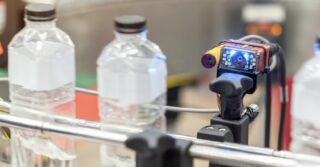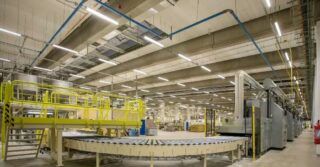Trust but verify. That’s the best way to stay out of hot water, they say – especially if you’re a manufacturer, warehouse operator or other downstream supply chain entity that must comply with numerous industry, government and customer mandates.
So, you train people on how to confirm the quality consistency and design conformity of every part and finished good coming off the line. You may even invest in machine vision systems that can automatically inspect everything from automotive and electronic components to food, beverage and pharmaceutical items for production, assembly, and fill accuracy. You understand the risks of oversights from a consumer safety and financial consequence perspective.
But are you giving equal consideration and investment to the production and verification of the labels going on those products or their packaging? Or do you just trust that your print-and-apply system is configured and operating correctly?
More Value Must Be Assigned to Label Validations
Though the print engines used in today’s print-and-apply systems are known for their accuracy, it’s risky to trust that every label is being placed in the right position and reflects the right information.
It doesn’t make sense to have someone standing on the line, keeping eyes on every labelled product or package running through the print-and-apply system. It may be hard to thoroughly inspect every labelled item without slowing down – or stopping – operations. And the person assigned to verify label quality and accuracy could overlook errors.
The next recipient might be able to fix the label issue, if caught by an inbound team at a warehouse for example. Or they might be able to stop the further shipment of mislabelled products. But what if the labelling error is identified by a regulatory inspector or consumer? Or what if the package is erroneously sent to the wrong person, or stalled progress at a sorting station, because the address is incorrect or illegible? The consequences could be severe and costly.
That’s why we’re seeing a trend toward automated “trust, but verify” in labelling applications and, specifically, print-and-apply labelling applications.

Photo: Zebra Technologies
Labels: Present, Readable, and in the Right Place
There are a few reasons why 1D and 2D label validations should be automated in conjunction with print-and-apply systems. You need to be 100% sure a label is present, and the information is correct as soon as it’s printed and (supposed to be) applied. Label integrity is critical to compliance in highly regulated industries, such as pharma, automotive and food and beverage. If text isn’t bold enough or the right colour, or a lot number is missing, you could be financially liable for misuse or the inability to recall quickly. Of course, a missing label is never a good thing, as that leads to waste and fulfilment delays.
You also need to make sure label data is readable. It’s important that all data can be extracted by scanners as goods move through the supply chain.
Label placement must also be correct. If a label is affixed even a half centimetre off from its required position, it’s possible the human eye won’t discern that, and you could be deemed non-compliant.
By installing fixed industrial scanning and machine vision systems on the line next to your print engines, you’ll be able to immediately catch and resolve any issues with label quality, positioning, or data accuracy before affected items make it off the line and to the loading dock or further downstream into the supply chain.
“Trust, but verify” with scanners and cameras
The fixed industrial scanners can look for the presence or absence of labels and data, while machine vision systems can be trained to look for a shape or logo (aka a “Model”) on a label. When the item passes under the machine vision camera in an outbound inspection application, it will look for that Model to ensure presence and proper positioning.
If used for sortation, it will look for the courier logo and redirect the package to the right line for onward distribution. Machine vision systems can also measure the brightness or perform a pixel count within a search region on the label. You can define the inspection criteria within a set of limits, and products that exceed these limits will fail.
The beauty of this type of automated validation scan is that it can double as a progress report and doesn’t involve any manual intervention unless the system identifies an issue. I don’t have to tell you that product traceability is becoming mission critical for many reasons. So, anytime you can confirm that an item has passed a certain checkpoint, you and other stakeholders gain valuable operational insight that can inform business planning, reporting and optimisation.
You will also free up workers to focus on even higher-value tasks. And that will only strengthen your ability to keep production, fulfilment, and distribution operations compliant and consistently on schedule.








